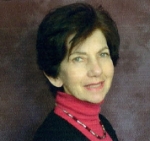 Ilona Roth is author of the new book The Autism Spectrum in the 21st Century: exploring psychology, biology and practice, with Chris Barson, Rosa Hoekstra, Greg Pasco and Terry Whatson. She is a Senior Lecturer in Psychology, Department of Life Sciences, Faculty of Science, Open University and Chair of the new Level 1 OU course ‘Understanding the autism spectrum’ which, like the JKP book, is aimed at anyone wishing to find out more about the autism spectrum. Over 1100 students are studying the first presentation of the course.
Ilona Roth is author of the new book The Autism Spectrum in the 21st Century: exploring psychology, biology and practice, with Chris Barson, Rosa Hoekstra, Greg Pasco and Terry Whatson. She is a Senior Lecturer in Psychology, Department of Life Sciences, Faculty of Science, Open University and Chair of the new Level 1 OU course ‘Understanding the autism spectrum’ which, like the JKP book, is aimed at anyone wishing to find out more about the autism spectrum. Over 1100 students are studying the first presentation of the course.
International Asperger’s Day falls on February 18th. This event, which aims to highlight the significance of Asperger syndrome for both society and individuals, also illustrates one of the many challenges to the newcomer trying to understand the autism spectrum. Such a person might reasonably assume that Asperger syndrome is a condition in its own right. Indeed, its diagnostically separable status within the spectrum is currently enshrined in both the DSM-IV-TR and ICD-10 diagnostic classification systems.
It took many years for Hans Asperger’s work, first published in 1944, to have the influence it has today. Leo Kanner had published his own seminal paper in 1943, coining the term ‘autistic aloneness’ to describe a syndrome-a relatively specific clinical disorder with a characteristic set of symptoms. The unrecognised link between the work of these two men finally came to light when Lorna Wing brought Asperger’s work to wide attention in the 1980s. This vital step in the transition from autism considered as a syndrome, to the 21st century concept of an autism spectrum has transformed clinical thinking and public understanding. The diagnosis of Asperger syndrome provides relief to countless individuals whose relatively ‘mild’ autistic traits would previously have been interpreted as eccentricity, bad behaviour or the like. And, of course, a broad diagnostic spectrum is one factor contributing to the greatly raised prevalence estimates for autism as a whole.
Yet just when the concept of Asperger has become so firmly established in both clinical practice and public understanding, the latest report from the DSM-V Neurodevelopmental Disorders Work Group signals the likelihood that Asperger syndrome, and other diagnostic ‘sub-types’ within the spectrum will be replaced by a single label, ‘autism spectrum disorder’, individuals being differentiated according to the severity of their symptoms. The rationale for this change is understandable-for instance the need for greater reliability and consistency in diagnoses between different clinicians, places and times. But the consequences will be manifold: to those for whom the label ‘Asperger syndrome’ is a badge of identity, the change may be unwelcome. For others, it may bring greater recognition of the difficulties experienced even at the ‘high-functioning’ end of the spectrum.
Charting the unfolding concept of the autism spectrum is just one of the many themes developed in The Autism Spectrum in the 21st century: exploring psychology, biology and practice to provide a lively, accessible and up to date introduction to the autism field. The book caters, especially, for people approaching the field for the first time, who may otherwise struggle to identify reliable sources from the vast array of books, newspaper articles and internet sites, and may fail to get to grips with often complex theories and research findings. The intended audience includes teachers, health and social work professionals, parents, and individuals on the spectrum who would like to find out more about their own condition. Beyond this are students of psychological, biological and health sciences, and many others who just want to know more about this fascinating topic.
This book, which I have written with colleagues from the Open University, The Autism Research Centre at Cambridge University, and the National Autistic Society, covers the core topics, from psychological and biological explanations of why autism occurs, to diagnosis, intervention, education, family life and societal issues. The approach is not just to inform readers about a topic, but to equip them with the tools to analyse and evaluate material for themselves, via step-by-step guides to the key methods and approaches used by researchers and practitioners. We employ the Open University’s tried and trusted interactive study techniques, including key terms in bold, accompanied by definitions in an online glossary, section by section summaries, and self-assessment questions for readers to test their own understanding.
Last but not least, while our book draws extensively upon sources offering authoritative ‘outside’ perspectives on autism, we interpolate these with the first-hand accounts of people on the spectrum, whose ‘inside’ perspectives do so much to challenge, enrich and enhance our understanding.
Copyright © Jessica Kingsley Publishers 2010